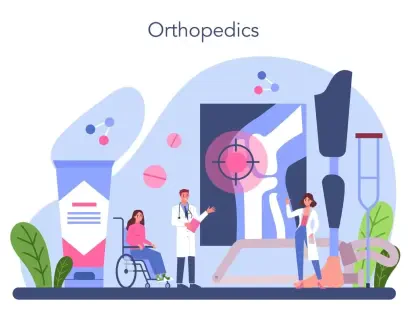Imagine a healthcare system where a patient’s critical medical history is just a click away for clinicians, eliminating delays, reducing errors, and saving lives in high-stakes situations. In Victoria, Australia, this vision is becoming reality with a groundbreaking initiative that tackles one of the most persistent challenges in public health: fragmented data sharing. This industry report dives into the state’s ambitious rollout of a centralized health information exchange system, exploring its potential to reshape healthcare delivery through digital innovation, enhanced efficiency, and a steadfast commitment to patient safety.
Understanding Victoria’s Healthcare Landscape
Victoria’s public healthcare system serves millions of residents through an extensive network of hospitals and health services, yet it has long grappled with inefficiencies stemming from disjointed data systems. Patient information, often scattered across multiple platforms or trapped in outdated formats like faxes, has hindered timely decision-making, leading to redundant tests and compromised care. This fragmentation poses a significant barrier to achieving seamless coordination among providers, particularly in emergency settings where every second counts.
Digital transformation has emerged as a critical solution to these challenges, with technology playing a pivotal role in streamlining operations and improving patient outcomes. By leveraging advanced platforms, healthcare systems can integrate data, reduce administrative burdens, and empower clinicians with actionable insights. Victoria’s push toward modernization reflects a global shift in recognizing that efficient data sharing is no longer optional but essential for high-quality care.
Key stakeholders driving this change include the Victorian government and Altera Digital Health, a technology partner with expertise in health information systems. Their collaboration impacts a wide scope of public health services, from major metropolitan hospitals to regional facilities, aiming to create a unified framework that benefits both providers and patients. This initiative marks a significant step in addressing systemic inefficiencies across the state’s healthcare ecosystem.
Introducing CareSync Exchange: A Game-Changer for Healthcare
Core Features and Technology Behind CareSync Exchange
At the heart of Victoria’s healthcare transformation is CareSync Exchange, a cutting-edge platform built on Altera Digital Health’s dbMotion technology. This system offers near real-time access to over 2.3 million patient records, providing clinicians with a comprehensive view of vital information. From demographics and emergency contacts to hospital visits, pathology reports, and discharge summaries, the platform ensures that critical data is readily available at the point of care.
Unlike the outdated methods it replaces—such as faxes and emails—CareSync Exchange operates as a secure, centralized hub co-designed with input from clinicians. This collaborative approach ensures that the system aligns with real-world needs, enabling faster, more accurate decision-making. By consolidating disparate data sources into a single interface, it minimizes errors and enhances the overall quality of patient interactions.
Phased Rollout and Expansion Plans
The implementation of this transformative system began with initial deployments at Austin Health and Eastern Health, setting a foundation for broader adoption. Plans are underway to extend coverage to seven additional major health services by the end of the current year, including prominent institutions like Northern Health, Alfred Health, and The Royal Children’s Hospital. This phased approach allows for careful testing and refinement during early stages.
Looking ahead, the long-term goal is full deployment across all public health settings by 2028, ensuring that every corner of Victoria’s healthcare network benefits from integrated data sharing. This timeline reflects a strategic balance between urgency and precision, aiming to maximize impact without compromising system stability. As coverage expands, the initiative promises to elevate the standard of care delivery on a statewide scale.
Addressing Challenges in Healthcare Data Sharing
Historical issues with disjointed medical records have plagued Victoria’s healthcare system for decades, often resulting in duplicated diagnostic tests, preventable medical errors, and delays in treatment. These inefficiencies not only strain resources but also erode trust in the system, as patients and providers navigate a maze of incomplete or inaccessible information. The cost—both financial and human—underscores the urgent need for reform.
CareSync Exchange directly confronts these obstacles by offering a streamlined gateway to comprehensive patient data, enabling healthcare professionals to make informed decisions without unnecessary hurdles. By cutting down on administrative tasks, such as manually tracking down records, the platform frees up time for clinicians to focus on direct patient care, ultimately enhancing service efficiency and effectiveness.
Despite its potential, adoption challenges remain, including the need for extensive staff training and seamless integration with existing systems. Addressing these barriers requires targeted strategies, such as tailored educational programs and robust technical support, to ensure smooth transitions. Overcoming these hurdles will be crucial to realizing the full benefits of this digital shift across diverse healthcare environments.
Prioritizing Privacy and Security in Digital Health
In an era of increasing cyber threats, safeguarding patient information is paramount, and CareSync Exchange incorporates state-of-the-art security features to protect sensitive data. Firewalls, data encryption, and systems for detecting unauthorized access form a multi-layered defense, ensuring that patient records remain confidential. These measures are designed to instill confidence among users and stakeholders alike.
Beyond technical safeguards, a stringent privacy framework governs how clinical users interact with the platform, promoting responsible data handling practices. This structured approach balances accessibility with accountability, ensuring that patient trust is never compromised. Compliance with these guidelines is a cornerstone of the system’s design, reflecting a commitment to ethical standards.
This focus on security aligns with broader state efforts, including a substantial A$35 million budget allocation to strengthen cybersecurity and modernize legacy systems across public health services and Ambulance Victoria. Such investments highlight the critical importance of protecting health data in a digital landscape where vulnerabilities are constantly evolving. Victoria’s proactive stance sets a benchmark for integrating security into healthcare innovation.
The Future of Healthcare in Victoria with Digital Innovation
CareSync Exchange positions Victoria at the forefront of global trends favoring interoperability and integrated digital health solutions, mirroring successful models like the Gippsland Health Alliance’s electronic medical record rollout. This alignment with international best practices underscores a growing recognition that connected systems are essential for modern healthcare. The state’s efforts serve as a blueprint for others seeking to bridge data silos.
Looking forward, the potential for integrating CareSync Exchange with other digital tools opens exciting avenues for enhancing care delivery. Emerging technologies, such as advanced analytics and telehealth platforms, could further amplify the system’s impact, creating a more responsive and adaptive healthcare network. These possibilities point to a future where innovation continuously drives improvements in patient experiences.
Victoria’s Minister for Health, Mary-Anne Thomas, has emphasized a dual commitment to technological advancement and patient-centric care, noting that breaking down data barriers allows healthcare workers to prioritize what truly matters—caring for patients. This perspective resonates throughout the sector, reinforcing the idea that digital solutions must ultimately serve human needs. The state’s vision reflects a harmonious blend of progress and compassion.
Conclusion
Reflecting on Victoria’s journey with CareSync Exchange, it becomes evident that the initiative tackles deep-rooted challenges in data sharing, setting a new standard for healthcare efficiency and patient safety. The phased rollout and robust security measures demonstrate a thoughtful approach to modernization, ensuring that the system scales responsibly while protecting sensitive information.
Moving forward, sustained investment in staff training and system integration stands out as critical next steps to maximize adoption and impact. Collaboration between government, technology partners, and healthcare providers remains essential to navigate emerging challenges and seize opportunities for innovation. Victoria’s experience offers valuable lessons for other regions, proving that a balanced focus on technology and patient well-being can redefine the future of public health.









